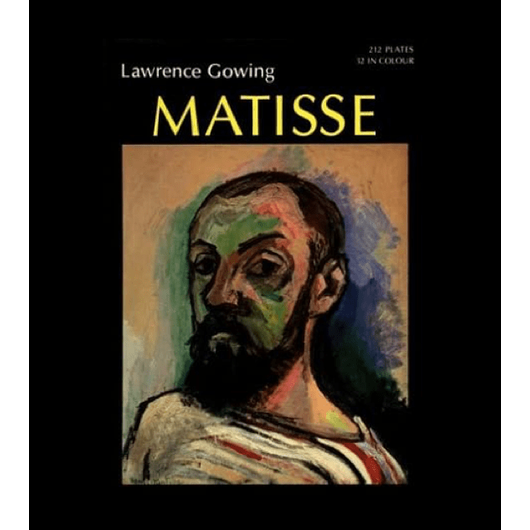Matisse
Por favor, regístrese para que podamos notificarle una respuesta
Only a quarter-century after his death, Henri Matisse stands in the company of those great artists whose work has been both a profound inspiration to others and a source of infinite enjoyment to all who love art.
This richly illustrated book draws upon Lawrence Gowing's earlier writings on Matisse, including a study described by Albert Elsen as "one of the finest, most perceptive and inspired essays" on the subject. Adding much material that is new and brilliantly penetrating, Gowing takes us through Matisse's career, evaluating at each stage the artist's relationship to tradition and to contemporary art. He assesses Matisse's significance to the art that has followed him and looks closely at Matisse's own achievement. The detailed discussion of individual works reveals the subtlety and complexity of one of the greatest masters of our time.
ABOUT THE AUTHOR
Lawrence Gowing, painter and writer on painting, is Slade Professor of Fine Art at the University of London and Director of the Slade School of Fine Art. His many publications include major studies of Vermeer, Renoir, Cézanne, and Constable.From the text"It was not unusual to require from art a solace and a refuge. Matisse was unique in the realism with which he recognized the need; the resourcefulness with which he pursued it amounted to genius. He demanded of art the expression of an ideal state of being. He did not merely require a representation of a perfect world, although he sought that as well in several different forms. His object was not even directly. sensuous. The senses were continuously engaged, but Matisse half mistrusted them: sensual gratification was itself precarious. In 1929 he concluded that one may demand from painting a more profound emotion, and one which touches the spirit as well as the senses. We can see that at root he was demanding nothing less than the independent, abstract re-creation of ideal conditions of existence - states of visible perfection from which the least possibility of frustration was eliminated."
_________________
Sólo un cuarto de siglo después de su muerte, Henri Matisse se encuentra en la compañía de esos grandes artistas cuya obra ha sido a la vez una profunda inspiración para otros y una fuente de disfrute infinito para todos los que aman el arte.
Este libro, profusamente ilustrado, se basa en los escritos anteriores de Lawrence Gowing sobre Matisse, incluido un estudio descrito por Albert Elsen como "uno de los ensayos más finos, perspicaces e inspirados" sobre el tema. Añadiendo mucho material nuevo y brillantemente penetrante, Gowing nos lleva a través de la carrera de Matisse, evaluando en cada etapa la relación del artista con la tradición y con el arte contemporáneo. Valora la importancia de Matisse para el arte que le ha seguido y examina de cerca los logros del propio Matisse. El análisis detallado de obras individuales revela la sutileza y complejidad de uno de los más grandes maestros de nuestro tiempo.
SOBRE EL AUTOR
Lawrence Gowing, pintor y escritor sobre pintura, es Catedrático Slade de Bellas Artes en la Universidad de Londres y Director de la Slade School of Fine Art. Entre sus numerosas publicaciones figuran importantes estudios sobre Vermeer, Renoir, Cézanne y Constable.Del texto "No era raro requerir del arte un solaz y un refugio. Matisse era único por el realismo con el que reconocía esa necesidad; la inventiva con la que la perseguía equivalía a la genialidad. Exigía del arte la expresión de un estado ideal del ser. No exigía simplemente la representación de un mundo perfecto, aunque también buscaba eso de varias formas diferentes. Su objetivo ni siquiera era directamente sensual. Los sentidos estaban continuamente ocupados, pero Matisse desconfiaba a medias de ellos: la gratificación sensual era en sí misma precaria. En 1929 llegó a la conclusión de que se podía exigir a la pintura una emoción más profunda, que tocara tanto el espíritu como los sentidos. Podemos ver que en el fondo exigía nada menos que la recreación independiente y abstracta de condiciones ideales de existencia, estados de perfección visible de los que se eliminaba la más mínima posibilidad de frustración".
No se encontraron reseñas


